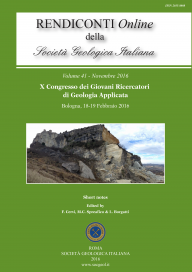
Back monitoring of the San Leo (northern Italy) rock cliff by means of SqueeSAR technique
Andrea Ciampalini (a), Federico Raspini (a) & William Frodella (a)
(a) Department of Earth Sciences , University of Florence, Via La Pira, 4, 50121, Firenze, Italy. E-mail: andrea.ciampalini@unifi.it
DOI: https://doi.org/10.3301/ROL.2016.135
Volume: 41/2016
Pages: 227-230
Abstract
San Leo (Emilia-Romagna Region, northern Italy) is a medieval town built on top of an isolated rock massif, located within the Marecchia river valley. The area is historically affected by rock fall events occurred during the last 400 years. As a consequence of a huge rock fall, occurred on February 27th 2014, minor structural damages were reported and a few buildings of the town were promptly evacuated as a precautionary measure. Today the San Leo cultural heritage is in safety but it is still threatened by the instability of the cliff newly formed by the rock fall. In this framework, satellite remote sensing tools (Synthetic Aperture Radar) were used in order to evaluate the presence of precursory phenomena with respect to the 2014 rock fall. For this purpose 74 COSMO-SkyMed archival images were processed by using the SqueeSAR approach. Results highlighted the presence of: i) ground deformations which still affect the past landslide deposits surrounding the rock massif: ii) displacements which can be considered as possible precursory phenomena.
Keywords
Get Full Text